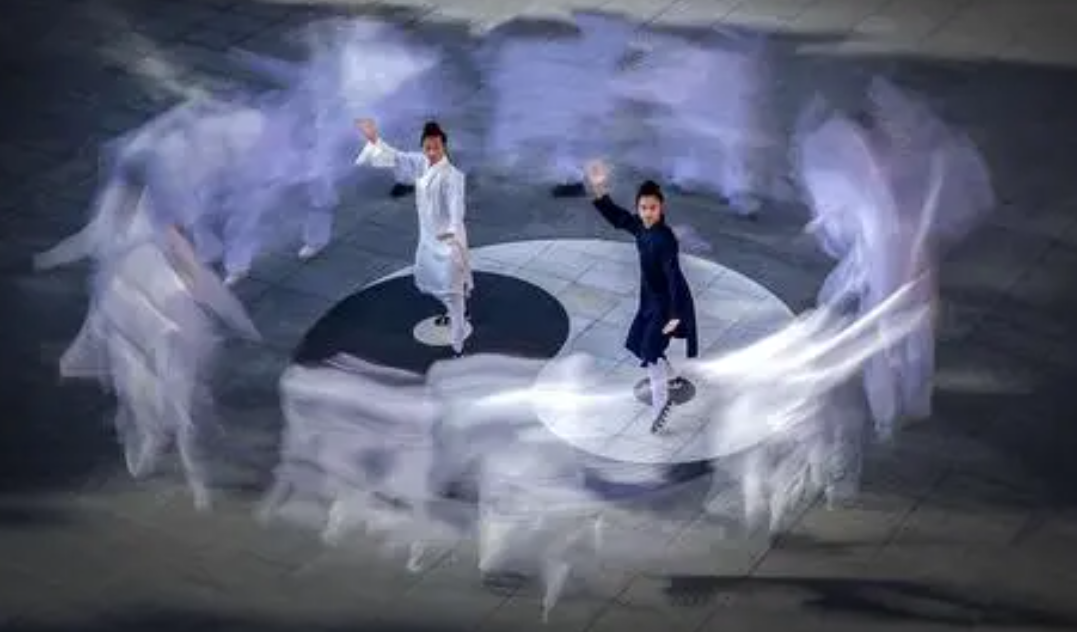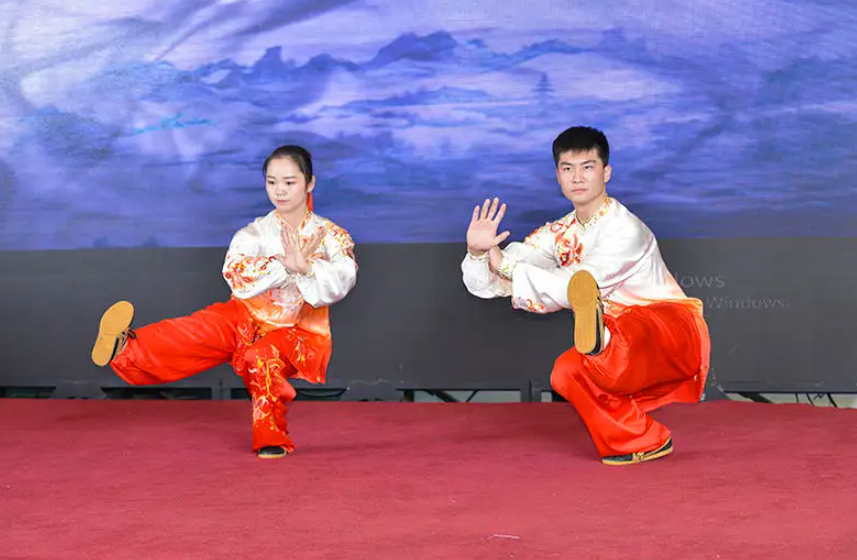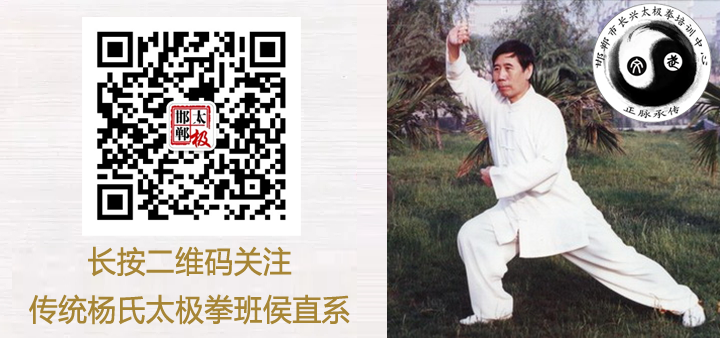How to Achieve Relaxation and Sinking? What is the Difference Between Relaxation and Loosening?1. Adhere to the principles of Tai Chi: maintain a light and empty top (xu ling ding jin), sink the shoulders and drop the elbows (chen jian zhui zhou), relax the waist and drop the hips (song yao luo kua), keep the tailbone aligned (wei lu zhong zheng), and center the weight on the Yongquan point (yong quan), to achieve complete relaxation and sinking. In other words, keep the spine straight and the body free of any stiffness; aside from the feet supporting the body weight, no muscle should be tense.2. When practicing the Tai Chi frame, every part of the body, whether moving forward, backward, rising, sinking, or turning left and right, should move with the waist as the axis. Since the hands, feet, and torso are all driven by the waist, there is no need to exert additional force to move them. This is the minimum requirement for relaxation and sinking.3. Focusing solely on relaxation without considering the waist axis will result in movements that do not follow each other smoothly, failing to meet the requirement of “one movement affects all movements” as stated in Tai Chi classics. This kind of relaxation is merely loosening.How to Practice the Waist Axis Effectively?1. Be the master of the waist: when practicing, use the waist as the axis to drive the body. The waist must move first, and then the hands and feet will follow; if the waist does not move, the hands and feet will not move automatically. Therefore, keep your awareness focused on the waist at all times.2. Achieve the principle of “one movement affects all movements”: once you can use the waist to drive the Tai Chi frame, pay attention to the subtle transitions in the frame. Even a small arc of the hand is an external manifestation of the waist moving in an arc. At this point, the internal and external, the dynamic and static, the empty and full, all harmonize, demonstrating a complete and unified skill.3. If there are any awkward transitions in the frame, the issue lies in the waist and legs, not in the hands and feet. Adjustments should be made at the waist and legs, rather than solely focusing on the hands and feet.How to Distinguish Between Fullness and Emptiness?1. Maintain proper proportions and strive for balance: whether in a forward bow, backward sit, left glance, or right look, keep the posture upright, ensuring that the center of gravity does not exceed the base formed by the feet, and remains closely tied to the waist axis. This is what the ancients referred to as “guarding the center”.2. The transition of the center of gravity should be slow and gradual: when practicing the frame, the left and right feet should transition from empty to full or from full to empty without abrupt changes. The alternation should be as clear and detailed as possible, meaning that as one side becomes more empty, the other becomes more full, changing slowly.3. Clearly distinguish between fullness and emptiness: when stepping, the empty foot should be able to rise and fall freely, while the full foot should naturally bend and maintain elasticity, with the center of gravity resting on the Yongquan point. How to Achieve Continuous and Unbroken Movements?1. Movements should be slow and interconnected: between changes in techniques, alternate slowly without pauses or stagnation in thought. One technique leads into the next; the beginning of this technique is the end of the previous one, and the end of this technique is the beginning of the next, flowing continuously like the Yangtze River.2. Use the waist axis to drive the Tai Chi frame: from start to finish, maintain the waist as the axis and master the movements with the waist, making it easier to connect movements smoothly. Over time, the entire set of Tai Chi will become seamless, with only the rising and falling movements visible, without any signs of interruption.
How to Achieve Continuous and Unbroken Movements?1. Movements should be slow and interconnected: between changes in techniques, alternate slowly without pauses or stagnation in thought. One technique leads into the next; the beginning of this technique is the end of the previous one, and the end of this technique is the beginning of the next, flowing continuously like the Yangtze River.2. Use the waist axis to drive the Tai Chi frame: from start to finish, maintain the waist as the axis and master the movements with the waist, making it easier to connect movements smoothly. Over time, the entire set of Tai Chi will become seamless, with only the rising and falling movements visible, without any signs of interruption. How to Coordinate Breathing?1. Go with the flow: when practicing, do not focus on your breathing; let it happen naturally. Since the Tai Chi frame is slow, the breathing will naturally slow down, becoming deeper, finer, and longer than usual.2. Basic principles: after some time, you will gradually realize that this natural breathing is almost like: inhaling when opening, exhaling when closing, inhaling when rising, exhaling when falling, and inhaling when gathering energy (changing techniques) and exhaling when striking. However, if some movements do not align with these principles, let them be natural; do not forcefully hold your breath, as this would violate the requirement for relaxation and softness.3. Sink the Qi to the Dantian: use abdominal breathing, allowing the lower abdomen to gradually protrude when inhaling and retract when exhaling, to stimulate the internal organs and promote normal endocrine function. Over time, this will enhance your energy and greatly benefit your health.How to Contemplate and Reflect?1. First, eliminate distractions: before practicing, calm down and avoid random thoughts.2. Always reflect inward: after calming the mind, turn your thoughts inward to check if your body is relaxed and light, if the tailbone is aligned, if all movements are driven by the waist axis, and if fullness and emptiness are clear. By carefully reflecting on these aspects over time, you will gradually be able to move as you wish.The answers to the six questions above are all related to the “waist axis”, highlighting its importance in Tai Chi. As the saying goes, “Tai Chi relies on the waist, and Bagua relies on the steps”, which confirms that beginners must pay attention to the waist axis in Tai Chi. The more you practice the frame, the more you may feel that Tai Chi is difficult to learn. Therefore, in addition to practicing daily, it is essential to study the principles of Tai Chi diligently to avoid going off course; otherwise, “a small deviation can lead to a thousand miles of error”, making it difficult to master Tai Chi.
How to Coordinate Breathing?1. Go with the flow: when practicing, do not focus on your breathing; let it happen naturally. Since the Tai Chi frame is slow, the breathing will naturally slow down, becoming deeper, finer, and longer than usual.2. Basic principles: after some time, you will gradually realize that this natural breathing is almost like: inhaling when opening, exhaling when closing, inhaling when rising, exhaling when falling, and inhaling when gathering energy (changing techniques) and exhaling when striking. However, if some movements do not align with these principles, let them be natural; do not forcefully hold your breath, as this would violate the requirement for relaxation and softness.3. Sink the Qi to the Dantian: use abdominal breathing, allowing the lower abdomen to gradually protrude when inhaling and retract when exhaling, to stimulate the internal organs and promote normal endocrine function. Over time, this will enhance your energy and greatly benefit your health.How to Contemplate and Reflect?1. First, eliminate distractions: before practicing, calm down and avoid random thoughts.2. Always reflect inward: after calming the mind, turn your thoughts inward to check if your body is relaxed and light, if the tailbone is aligned, if all movements are driven by the waist axis, and if fullness and emptiness are clear. By carefully reflecting on these aspects over time, you will gradually be able to move as you wish.The answers to the six questions above are all related to the “waist axis”, highlighting its importance in Tai Chi. As the saying goes, “Tai Chi relies on the waist, and Bagua relies on the steps”, which confirms that beginners must pay attention to the waist axis in Tai Chi. The more you practice the frame, the more you may feel that Tai Chi is difficult to learn. Therefore, in addition to practicing daily, it is essential to study the principles of Tai Chi diligently to avoid going off course; otherwise, “a small deviation can lead to a thousand miles of error”, making it difficult to master Tai Chi.
If there are any copyright issues, please contact the original author through the backend.The articles published are for learning and reference only.Please practice under the guidance of a professional teacher.

Official website: http://www.yunshuiwang.com



